国际货币基金组织IMF
国际货币金融机构的组织结构和职能

国际货币金融机构的组织结构和职能国际货币金融机构指的是为促进全球金融稳定和发展而成立的组织体系。
它们的组织结构和职能在很大程度上有助于确保全球金融秩序的稳定和可持续发展。
主要的国际货币金融机构包括国际货币基金组织(IMF)、世界银行、国际清算银行(BIS)和金融稳定理事会(FSB)。
首先,国际货币基金组织(IMF)是一个由189个会员国组成的国际机构,目的是促进国际货币合作、保持全球金融稳定、促进经济增长和减少贫困。
IMF的组织结构包括代表全体会员国的国际货币与金融委员会、执行机构的执行董事会、总裁和管理层。
IMF的职能主要包括以下几个方面:1.监督全球经济:IMF通过定期的全球经济展望报告和国别经济检视报告,监督国际经济状况,评估经济政策的效果,提出政策建议,促进全球经济的稳定和健康发展。
2.支持会员国经济调整:IMF可以向会员国提供贷款和技术援助,帮助其解决付款平衡问题,促进经济调整和,并避免金融危机的蔓延。
3.促进国际贸易:IMF通过与世界贸易组织(WTO)合作,推动贸易自由化和减少保护主义,促进全球贸易的发展和经济增长。
其次,世界银行是一个由189个会员国组成的国际金融机构,致力于减少全球贫困和促进可持续发展。
世界银行的组织结构包括董事会、总裁和执行管理层。
世界银行的职能主要包括以下几个方面:1.提供发展贷款和援助:世界银行向发展中国家提供贷款和援助,用于支持基础设施建设、教育、卫生和农业等领域的发展项目,推动可持续发展和减少贫困。
2.提供政策建议和技术援助:世界银行通过开展研究和分析,为会员国提供政策建议和技术援助,帮助其改善经济管理和发展政策,实现经济增长和减少贫困。
3.促进全球发展合作:世界银行通过与其他国际组织和机构的合作,推动全球发展合作和经济一体化,促进国际经济秩序的稳定和可持续发展。
国际清算银行(BIS)是一个由60个中央银行组成的国际金融机构,其主要任务是促进国际金融合作和监管。
国际货币基金组织

(四)组织机构 1.理事会(Board of Governors ): 国际货币基金组织的最高权力机构是理事会, 由每个成员国委派理事和副理事各一人组成。副 理事只有在理事缺席时才有投票权。 理事会通常一年召开一次会议,通常在每年 秋季召开,即“年会”。
12
2.执行董事会:(Executive Board) 执行董事会是负责处理国际货币基金组织日 常业务的机构,每个执董所代表的国家形成一个 执董选区,理事会经总投票权85%的多数决定 增加或减少执董数目。 目前由24人组成,其中5人由在基金组织内 占有份额最多的5个成员国组成(美国、英国、 德国、法国和日本)【非选举选区】,以及选举 区由一个国家组成的沙特阿拉伯、中国、俄罗斯, 【通常与5个非选举选区一道称为“单国选区”】 各单独指派一名执行董事。
7
根据IMF协定,份额以SDR计值,成员国必 须全额缴纳。 在1978.4.1日生效的第二次协定条款修订 之前,成员国缴纳份额的25%以黄金支付,其余 75%以本国货币支付。 而在协定第二次修订之后,25%部分不再要 求以黄金支付,而是以IMF规定的储备资产 (SDR或可兑换货币)缴纳,其余75%仍以本国 货币缴纳。
加拿大 6369 俄罗斯 5945
2.94 2.74
9
排 名
国家 美国 日本 中国 德国 英国 法国 意大利 印度 俄罗斯 巴西
百分比 17.43 6.47 6.39 5.59 4.23 4.23 3.16 2.75 2.71 2.32 2.31
10
改 革 后 份 额 最 大 的 个 国 家
1 2 3 4 5 5 6 7 8 9
当时共有45个国家参加了布雷顿会议, 但在1945年12月27号举行签字仪式时,仅 有29个国家正式签字成为基金组织的创始国。
国际货币基金组织对世界经济有什么重要作用
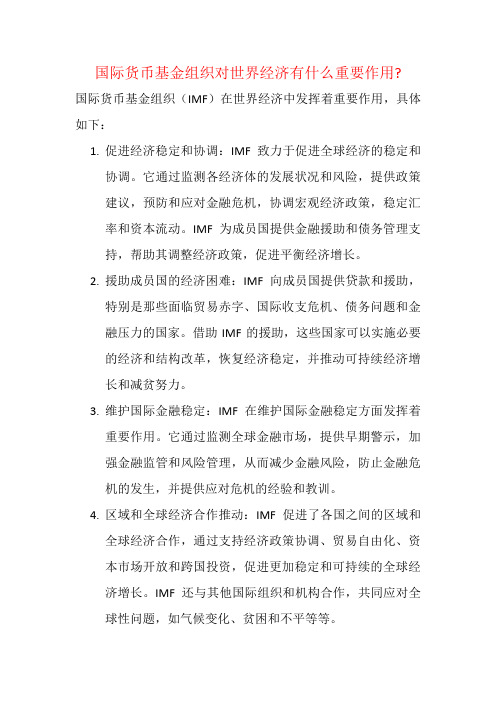
国际货币基金组织对世界经济有什么重要作用?国际货币基金组织(IMF)在世界经济中发挥着重要作用,具体如下:1.促进经济稳定和协调:IMF致力于促进全球经济的稳定和协调。
它通过监测各经济体的发展状况和风险,提供政策建议,预防和应对金融危机,协调宏观经济政策,稳定汇率和资本流动。
IMF为成员国提供金融援助和债务管理支持,帮助其调整经济政策,促进平衡经济增长。
2.援助成员国的经济困难:IMF向成员国提供贷款和援助,特别是那些面临贸易赤字、国际收支危机、债务问题和金融压力的国家。
借助IMF的援助,这些国家可以实施必要的经济和结构改革,恢复经济稳定,并推动可持续经济增长和减贫努力。
3.维护国际金融稳定:IMF在维护国际金融稳定方面发挥着重要作用。
它通过监测全球金融市场,提供早期警示,加强金融监管和风险管理,从而减少金融风险,防止金融危机的发生,并提供应对危机的经验和教训。
4.区域和全球经济合作推动:IMF促进了各国之间的区域和全球经济合作,通过支持经济政策协调、贸易自由化、资本市场开放和跨国投资,促进更加稳定和可持续的全球经济增长。
IMF还与其他国际组织和机构合作,共同应对全球性问题,如气候变化、贫困和不平等等。
5.发展中国家支持和援助:IMF在支持和援助发展中国家方面发挥着重要作用。
它通过提供贷款、技术援助和政策建议,帮助发展中国家加强宏观经济管理,推动可持续发展和减贫。
IMF还通过提供优惠融资和债务救济等措施,支持最贫困和脆弱国家实现可持续发展目标。
综上所述,IMF通过促进经济稳定和协调、援助成员国、维护国际金融稳定、推动经济合作和支持发展中国家等多个方面发挥着重要作用,为世界经济的健康发展和各国的共同繁荣做出贡献。
国际货币基金组织(IMF)

总裁:最高行政长官,由执行董事会推选,任期5年;负责业务工作(目前总裁是德国人科勒)
IMF的组织机构
基金份额
信托基金:出售黄金所得利润,用于向最贫穷的会员国提供贷款
借款:GAB(11个工业国提供);NAB(25个国家提供)
IMF资金来源
份额决定了投票权 (各会员国拥有250张基本票,每缴纳10万特别提款权基金份额增加1票)
国际金融公司:为私营部门提供投资资金;为政府和企业提供技术援助和咨询服务,促进发展中国家经济发展
世界银行集团
1
宗旨:为成员国生产性投资提供长期贷款和技术援助
2
主要业务:对发展中成员国提供长期贷款;对成员国政府或经政府担保的私人企业提供贷款和技术援助
3
资金来源:发行债券、成员国缴纳的股金、借款、利息收入
担保对象:基础设施和制造业的外国直接投资项目
目前,加大宣传力度,提高中国投资者对MIGA的认识
启动投资促进咨询项目(P54)
多边投资担保机构在中国
1
2
3
国际金融公司在中国
从事经济和社会发展政策研究
1961年在巴黎成立
30个成员国
主要目的:协调二战后欧洲经济的恢复工作和管理美国根据马歇尔计划提供的贷款
03
辅助机构
04
OECD组织机构
加强内部政策协调
90年代后,积极发展同非成员国(“富有活力的非成员经济体”)的关系,其中“五大国”中国、俄罗斯、巴西、印度和印尼是OECD对话合作的重点对象
OECD的工作重点
对世界经济和社会发展各领域进行前瞻性研究,并提出政策选择
定期审议各成员国的经济社会发展状况和政策
1996年12月1日,实行人民币经常项目下的可兑换,措施涉及贸易、劳动力和旅游领域,以及短期银行和信贷机构
IMF国际货币基金组织简介商务指南频道_贸易宝典.doc

IMF 国际货币基金组织简介_商务指南频道_贸易实务_贸易宝
典
国际货币基金组织(the International Monetary Fund,IMF),是政府间的国际金融组织。
它是根据1944年7月在美国新罕布什尔州布雷顿森林召开联合国和联盟国家的国际货币金融会议上通过的《国际货币基金协定》而建立起来的。
于1945年12月27日正式成立,1947年3月1日开始办理业务。
同年11月15日成为联合国的一个专门机构,但在经营上有其独立性。
至今,IMF已有182个成员国。
基金组织设5个地区部门(非洲、亚洲、欧洲、中东、西半球)和12个职能部门(行政管理、中央银行业务、汇兑和贸易关系、对外关系、财政事务、国际货币基金学院、法律事务、研究、秘书、司库、统计、语言服务局)。
其宗旨是作为一个常设机构在国际金融问题上进行协商与协作,促进国际货币合作;促进国际贸易的扩大和和平衡发展;促进和保持成员国的就业,生产资源的发展和实际收入的高水平;促进国际汇兑的稳定,在成员国之间保持有秩序的汇价安排,防止竞争性的货币贬值;协助成员国在经常项目交易中建立多边支付制定,消除妨成员国临时提供普通资金,使其纠正国际收支的失调,而不采取危害本国或国际繁荣的措施,缩短成员国国际收支不平衡的时间,减轻不平衡的程
度。
IMF主要业务活动有:向成员国提供货款,在货币问题上促进国际合作,研究国际货币制度改革的有关问题,研究扩大基金组织的作用,提供技术援助和加强同其它国际机构的联系。
国际货币基金组织对中国经济的影响

国际货币基金组织对中国经济的影响一、国际货币基金组织的概述国际货币基金组织(IMF)成立于1944年,是全球最大、最具影响力的货币金融机构之一,总部设在美国华盛顿。
IMF的主要任务是促进各国间的合作和经济发展,防范国际金融危机的发生,并通过提供贷款、技术援助和政策建议,帮助成员国解决经济问题和稳定汇率。
二、IMF对中国经济的影响1. 财政和货币政策建议IMF通过定期的经济评估和政策对话,向中国政府提供财政和货币政策建议。
这些建议通常涉及财政收支平衡、货币政策、金融监管和改革,以及结构性改革等领域。
IMF的建议对于中国政府制定和实施宏观经济政策具有指导性和参考性的作用。
2. 贷款和技术援助IMF还为中国提供了财务支持和技术援助。
在1998年亚洲金融危机时,IMF向中国提供了425亿美元的贷款,帮助中国应对危机并保持汇率和金融稳定。
在此后,IMF还为中国提供了大量的专家和技术支持,帮助中国改善经济结构、金融体系和监管体系。
3. 提高市场信心IMF对中国经济的评估和建议,以及提供贷款和技术援助,都有助于提高市场对中国经济的信心。
IMF作为国际金融机构的代表,其立场和行动能够为投资者提供参考和指引,增强外界对中国经济的信心和认可。
4. 加强国际间合作IMF的存在和作用,促进了国际间的合作和交流。
IMF会员国之间的合作和经验分享,有助于解决共同面临的经济问题和挑战,也为各国实现经济合作和发展提供了框架和机遇。
IMF对中国的经济影响,也是在这种国际合作体系的背景下发挥的。
三、总结IMF对中国经济的影响是多方面的,不仅仅是提供财务支持和技术援助,更重要的是提供了指导性和参考性的政策建议,加强了国际间的合作和交流,提高了市场对中国经济的信心。
作为中国特大经济体,中国需要继续深化改革,加强与IMF等国际机构的合作,更好地利用国内外各种资源和机遇,持续推动经济发展。
国际货币基金组织的结构与功能研究

国际货币基金组织的结构与功能研究国际货币基金组织(International Monetary Fund,简称IMF)是一个全球性的金融机构,拥有189个成员国,致力于促进国际金融合作,维护全球经济金融的稳定与繁荣。
本文将从组织结构和功能两方面对IMF进行研究。
一、组织结构IMF的组织结构包括议事会、董事会和行政部门三个主要层级。
议事会是IMF最高决策机构,由所有189个成员国组成,每个成员国都有代表权。
在议事会中,各成员国可以就关键议题进行讨论,并以大多数票通过条约、章程等政策决定。
董事会由24名执行董事组成,代表每个成员国或者成员国组成的集团。
董事会负责日常工作,并根据议事会的决策执行各项政策。
IMF的行政部门则由总裁和各个部门组成,负责组织的具体运营管理。
IMF的组织结构体现了各个成员国在机构内的代表权,确保了每个国家的利益得到平等的尊重。
同时,组织结构也使IMF能够高效地制定决策和实施政策,提供及时有效的国际金融合作和支持。
二、功能研究1. 经济监测和政策建议IMF作为一个全球经济监测机构,定期发布《世界经济展望》、《全球金融稳定报告》等报告,对世界各地的宏观经济状况进行分析和预测。
IMF的经济监测通过收集、整理和分析全球经济数据,帮助成员国了解国际经济形势,预测经济走势,有助于各国制定合适的宏观经济政策。
IMF还根据成员国的实际情况,提供经济政策建议和技术援助,帮助国家实施经济改革和发展战略,促进全球经济稳定与发展。
2. 货币政策协调和债务危机处理IMF协调成员国的货币政策,帮助解决国际金融体系中的不平衡和紊乱。
IMF通过提供全球经济政策协调的平台,促进成员国之间的政策对话和合作,减轻国际金融市场的不确定性,避免冲突和竞争。
此外,IMF还扮演着处理债务危机的角色。
当成员国面临支付危机时,IMF可以向其提供贷款和金融援助,帮助国家应对危机,维护金融稳定。
3. 发展援助和扶贫工作IMF关注发展中国家的经济发展和扶贫工作,通过提供金融援助和技术支持,帮助这些国家实现可持续发展和减贫目标。
国际货币基金组织26页PPT
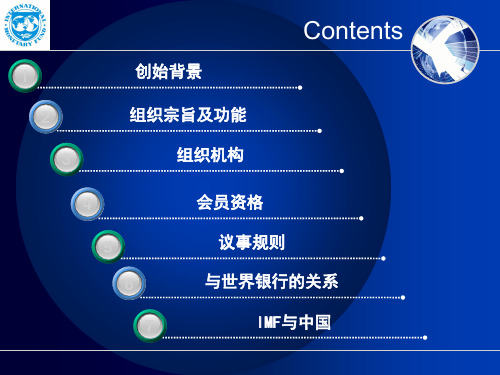
主要功能
制定成员国间的汇率政策和经常项目的支付以及货币兑换性方面的规则, 并进行监督
对发生国际收支困难的成员国在必要时提供紧急资金融通, 避免其他国家受其影响
4.常设职能部门
❖IMF设有16个职能部门,负责经营业务活 动。此外,IMF有2个永久性的海外业务机 构,即欧洲办事处(设在巴黎)和日内瓦办事 处。
会员资格
❖ 加入国际货币基金的申请,首先会由基金的董事局审议。 之后,董事局会向管治委员会提交“会员资格决议”的报 告,报告中会建议该申请国可以在基金中分到多少配额, 以及条款。管治委员会接纳申请后,该国需要修改法律, 确认签署的入会文件,并承诺遵守基金的规则。而且会员 国的货币不能与黄金挂钩(不能兑换该国储备黄金)
为成员国提供有关国际货币合作与协商等会议场所
促进国际间的金融与货币领域的合作
促进国际经济一体化的步伐
维护国际间的汇率秩序 协助成员国之间建立经常性多边支付体系
组织机构
总裁
常设职能部门
理事会
执行董事会
1.理事会
理事会是IMF的最高决策机构,由各成员国各派一 名理事、一名副理事组成,任期5年。理事通常由该 成员国的财政部长或中央银行行长担任,有投票表决 权。副理事在理事缺席时才有投票权。
❖ 国际货币基金组织是“由188个国家参与的组织,致力促 进全球金融合作、加强金融稳定、推动国际贸易、协助国 家达致高就业率和可持续发展”,除了朝鲜、列支敦士登、 古巴、安道尔、摩纳哥、图瓦卢和瑙鲁,所有联合国成员 国而且只能是联合国成员国才有权直接或间接成为基金的 成员。
IMFWBWTO的对比分析解读

IMFWBWTO的对比分析解读IMFWBWTO是三个国际组织的缩写,分别是国际货币基金组织(IMF)、世界银行(WB)、世界贸易组织(WTO)。
这三个组织在全球经济和贸易方面扮演着重要的角色,对比分析这三个组织的功能、作用和影响力,有助于更好地理解它们对全球经济和贸易的影响。
国际货币基金组织(IMF)是全球最重要的国际金融机构之一,其主要任务是维护全球金融稳定和促进国际经济协调。
IMF的主要职责包括监测全球经济发展状况、提供财政和货币政策建议、提供紧急贷款援助以防止金融危机,以及促进全球贸易和国际投资。
IMF的成员国必须按照IMF的规则和政策来制定国内经济政策,加强国际合作。
世界银行(WB)是国际金融组织之一,致力于减轻贫困和促进可持续发展。
世界银行通过提供低息贷款和技术援助来支持发展中国家的发展项目,帮助改善基础设施、教育、卫生、农业等领域的状况。
世界银行还提供政策和经济发展建议,促进发展中国家的经济增长和减少社会不平等。
对比分析这三个组织可以从多个方面进行,包括组织结构、功能职责、政策制定和影响力。
首先,从组织结构来看,IMF和世界银行都有类似的结构,包括执行董事会、执行长和成员国代表。
而WTO则采用了一国一票的制度,每个成员国都有平等的投票权。
IMF和世界银行的成员国由富裕的发达国家主导,而WTO则更加注重平等和多边主义。
其次,从功能职责来看,IMF主要关注金融稳定和协调,提供财政和货币政策建议。
世界银行则专注于支持发展中国家的可持续发展项目。
WTO则致力于促进全球贸易自由化,并制定和推动贸易规则的执行。
可以看出,这三个组织在目标和职责上有所不同,但都关注全球经济和贸易的稳定和发展。
再次,从政策制定和影响力来看,IMF和世界银行在政策制定过程中拥有更多的决策权,并且有较强的影响力。
IMF的建议和政策往往会对成员国的经济政策产生直接影响,而世界银行通过提供贷款和援助,对发展中国家的经济和社会发展起到重要推动作用。
国际货币基金组织
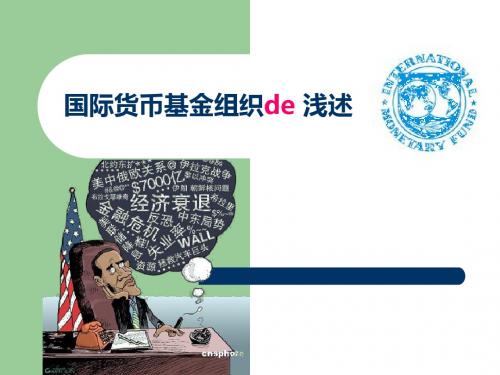
引证例子2:
原本肯尼亚的中央银行控制了该国货币的流动, 并在IMF提出协助后,放宽了货币政策。这次 调整,不但外商投资大减,在贪污官员的腐蚀 下,亏空了数以十亿计的肯尼亚先令,肯尼亚 的财政状况比之前更差。
评价
国际货币基金亡羊补牢的行动影响了它的声誉: 往往当国家已深受经济打击,IMF才伸手援助。其实, 这些国家出现经济问题,通常是数十年管理不善的结 果,而不为外界所知。管理不善导致国家陷入多年的 经济困境,IMF通常于这时提供协助,人们于是把经 济崩溃与IMF的介入连系起来。犯政客善于转移视线, 利用民族主义和人们对IMF的坏印象,以IMF作自己 的代罪羔羊。
家 急 成 受 资 员 其 金 国 影 融通 在 响 , 必 ; 避 要 免 时 其 提 他 供 国 紧 对 发 生 国 际 收 支 困 难 的
则 及 策 , 货 和 并 币 经 进 兑 常 行 换 项 监 性 目 督 方 的 ; 面 支 的 付 规 以 制 定 成 员 国 间 的 汇 率 政
与世界银行的区别
案例2(危机中):
中国网10月14日讯 据路透社报道,10月13日,国际货币基金 组织(IMF)的一名官员称,冰岛已经正式向该组织求助,旨在助 其应对金融危机。此外,冰岛和俄罗斯两国官员已经在莫斯科就 贷款事宜进行磋商。冰岛政府7日宣布,拟向俄罗斯借款40亿欧 元(54.9亿美元)以渡过难关。 2008年第四季度,在金融危机冲击下,冰岛数家大银行破产, 经济陷入困境。为援助冰岛摆脱困境,IMF同意向冰岛提供超 过20亿美元的援助贷款,并已按计划拨付了首批贷款。第二批 贷款的评估工作原计划于今年1月下旬启动,但因冰岛债务问题 受阻。
国际货币基金组织de 浅述
国际货币组织的概念
国际货币基金组织 (英文:International Monetary Fund -- IMF),是世界银行巨头 们私有的欧美中央银行以及其它一些掌控了世 界经济命脉的银行家们所掌握的国际金融组织。 它于1945年12月27日成立,与世界银行并列 为世界两大金融机构之一,其总部设在华盛顿。 我们常听到的“特别提款权”就是该组织于 1969年创设的。
国际金融组织 —— 国际货币基金组织IMF
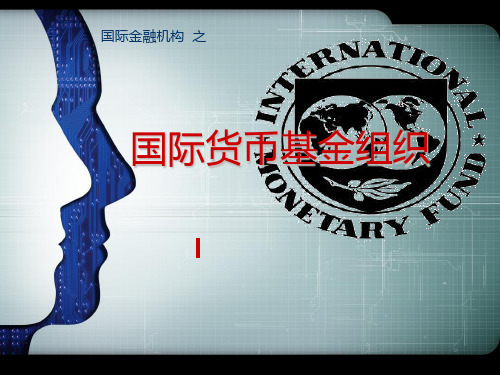
Company Logo
1 机构简介——“基金功能”
基金功能
外 汇 资 金 融 通
虚 拟 世 界 银 行
Company Logo
2 三大金融机构
WBG IMF WTO
世界银行(WBG )是世界银行集团的 俗称, 它是一个国际 组织,其一开始的使 命是帮助在第二次世 界大战中被破坏的国 家的重建。 今天它的任务是 资助国家克服穷困, 各机构在减轻贫困和 提高生活水平的使命 中发挥独特的作用。
Company Logo
5 国际货币基金组织的困境
困境一
国际货币基金 组织代表性与 全球经济发展 之间的冲突。
困境二
国际货币基 金组织金融危 机救济方式与 目标之间的冲 突。
困境三
国际货币基金组 织成为发达国家手 中的工具与其独立 性之间的冲突。
1内部控制权的缺陷 2作为最后贷款人的缺陷 3危机预警和救助功能的 缺陷 4特别提款权体系的困境
建立自己的储 备资金,使国际 货币基金组织 在维护国际货 币体系稳定方 面发挥更大的 作用
加强对国 际资本流 动的监管
World Trade Organization, 1994年4月15日 在摩洛哥举行的关 贸总协定乌拉圭回 合部长会议决定成 立。以取代成立于 1947年的关贸总 协定。
Company Logo
2 三大金融机构的关联与比较
1 二者区别:成员资格和组织结构不同;投票制度不同; 争端解决机制不同 2 二者合作:1994年《关于WTO和IMF的关系宣言》 1996年《IMF与WTO协议》
1 组织结构
1 机构简介
国际货币基金组织
宗旨 职能
援助使命
IMF
特别权力
基金功能
国际货币基金组织

国际货币基金的使命,是为陷入严重经济困境的国家提供协助。对于严重财政赤字的国家,基金可能提出资 金援助,甚至协助管理国家财政。受援助国需要进行改革,参阅华盛顿共识。
加入国际货币基金的申请,首先会由基金的董事局审议。之后,董事局会向管治委员会提交“会员资格决议” 的报告,报告中会建议该申请国可以在基金中分到多少配额,以及条款。
该组织临时委员会被看作是世界两大金融机构之一国际货币基金组织的决策和指导机构。该委员会将在政策 合作与协调,特别是在制订中期战略方面的充分发挥作用。委员会由24名执行董事组成。国际货币基金组织每年 与世界银行共同举行年会。
该组织宗旨是通过一个常设机构来促进国际货币合作,为国际货币问题的磋商和协作提供方法;通过国际贸 易的扩大和平衡发展,把促进和保持成员国的就业、生产资源的发展、实际收入的高低水平,作为经济政策的首 要目标;稳定国际汇率,在成员国之间保持有秩序的汇价安排,避免竞争性的汇价贬值;
特别提款权不是一种有形的货币,它看不见摸不着,而只是一种账面资产。
2011年1月1日,IMF“一篮子”货币在特别提款权中所占的比例分别为美元(41.9%)、欧元(37.4%)、日 元(9.4%)、英镑(11.3%)。
2015年11月30日,IMF将篮子货币的权重调整为:美元占41.73%,欧元占30.93%,人民币占10.92%,日元占 8.33%,英镑占8.09%。
协助成员国建立经常性交易的多边支付制度,消除妨碍世界贸易的外汇管制;在有适当保证的条件下,基金 组织向成员国临时提供普通资金,使其有信心利用此机会纠正国际收支的失调,而不采取危害本国或国际繁荣的 措施;按照以上目的,缩短成员国国际收支不平衡的时间,减轻不平衡的程度等。
制定成员国间的汇率政策和经常项目的支付以及货币兑换性方面的规则,并进行监督; 对发生国际收支困难的成员国在必要时提供紧急资金融通,避免其他国家受其影响; 为成员国提供有关国际货币合作与协商等会议场所; 促进国际间的金融与货币领域的合作; 促进国际经济一体化的步伐; 维护国际间的汇率秩序; 协助成员国之间建立经常性多边支付体系等。百科x混知:图解IMF
国际货币基金组织

国际货币基金组织
本专题内容
IMF成立的背景、基本职能 IMF的运行机制 IMF的影响
现象观察及思考:革IMF的命?
思考: 布雷顿森林体系之下的国际货币体系的 核心是什么? 在此之下的IMF的主要作用是什么? 维护成员国之间汇率的稳定,当成员国 国际收支出现“根本性失衡”时,IMF将 与其协商调整汇率平价以及提供流动性 援助等事宜。
基金组织对汇兑安排的监督和管理 原则:努力在各成员国之间建立起一项 经常性交易的多边支付制度,并通过消 除限制来促进世界贸易的均衡发展。 监督:对成员国在汇兑方面的一般义务 履行的监督。
5、向全球提供流动性
流动性:成员国可以使用的国际储备的 数量及其构成,以及进入国际资本市场 进行融资的能力。 提供:基金组织是成员国一部分国际储 备的储藏库,成员国在基金组织持有储 备头寸,有的成员国还向基金组织贷款。 如果需要在世界范围内补充储备,基金 组织可以通过分配SDR来提供。
基金组织成立之初,其协定的第一条就 规定,基金组织的宗旨是:
(1)通过建立一个常设机构,为开展有 关国际货币问题的磋商与协作提供机智, 从而促进国际货币领域的合作。
(2)促进国际贸易的扩大和平衡发展, 从而有助于各成员国提高和保持高水平 的就业和实际收入以及开发生产性资源, 并以此作为经济政策的首要目标。
至今IMF已有184个成员国:目前联合国 成员国中,只有古巴、列支敦士登、朝 鲜和梵蒂冈等极少数国家不是基金组织 的成员国。
2、分额与投票权
分额(quota):每个成员国在加入基金 组织时都要认缴一定数额的资金,相当 于股本,是基金组织的主要资金来源。 分额的作用:决定成员国投票权的大小; 决定了成员国可以从基金组织获得的贷 款的 最高限额;决定一国可获得的特别 提款权分配的多少。
国际货币基金组织概述
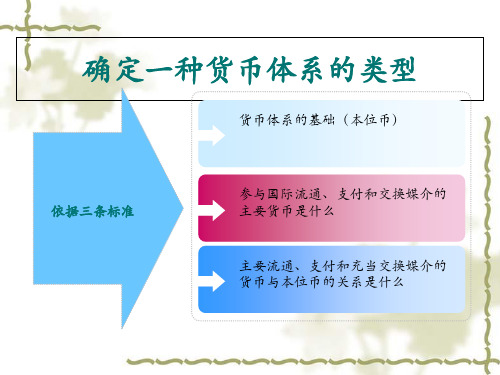
促进国际经济一体化的步伐
维护国际间的汇率秩序 协助成员国之间建立经常性多边支付体系
监督国际货币基金组织的职能
向成员国提供援助 减贫与减债
对汇兑安排的监督和管理 向全球提供流动性
推动资本账户可兑换 加强国际金融体系建设
国别监督
监 督
地区性监督
全球监督
返回
作为对国别磋商的补充,基金组织还检 查根地据区基性金的组经织济协和定金第融四政条策款。规基定金,组基织 定金期组与织欧与盟成、员西国非定经期济举与行货磋币商联(盟通、常中 非每经年济一与次货)币,联讨盟论及成东员加国勒的比经货济币政联策盟, 等并地由区有性关组工织作进人行员磋将商撰,写并的参磋与商一报些告地 区体政基织提将公会目济执形论会、性金讨交按势告前展董坛议东机组论基照(,望会的和南构织磋金成》P基在政海非的还I商组员N和金此策湾共活参)报织国四组基讨国同动与的告执自期织础论家,市七形的董愿《每上合场国如情式会的全年讨作集南、况向讨原球出论委部团东外论则金版全员非和盟界以。融两球会洲亚、公公基稳期经等发太西布共金定济《。展经半执信组报和世另共合球息董织告金界外同组财》融经,,
1.金汇兑制本身的缺陷。 2.储备制度不稳定。 3.国际收支调节机制的缺陷。 4.内外平衡难统一。
牙买加体系制度
❖ 实行浮动汇率制度的改革。 ❖ 推行黄金非货币化。 ❖ 增强特别提款权的作用。 ❖ 增加成员国基金份额。 ❖ 扩大信贷额度,以增加对发展中国家的融资。
主要职能 制定成员国间的汇率政策和经常项目的支付以及货币兑换性方面的规则, 并进行监督 对发生国际收支困难的成员国在必要时提供紧急资金融通, 避免其他国家受其影响 为成员国提供有关国际货币合作与协商等会议场所
国际货币基金组织的作用

国际货币基金组织的作用国际货币基金组织(International Monetary Fund,简称IMF)是一个由189个成员国组成的国际组织,其宗旨是促进全球经济的稳定与可持续发展。
IMF的主要职责是监督全球金融体系稳定、提供财政援助、促进经济合作、提供政策建议以及加强国际金融机构的合作。
IMF的主要作用包括以下几个方面:1.促进全球经济稳定:IMF通过监测全球经济形势和各国经济政策,提供及时的经济预测和风险评估。
IMF致力于防范和解决金融危机,通过提供财政援助、制定政策建议和帮助国家实施经济,促进全球经济的稳定。
2.提供财政援助:IMF为成员国提供财政援助,帮助国家应对外部经济冲击和财政危机。
IMF的财政援助通常与国家对内的经济措施相结合,以确保资金被有效地使用,并帮助国家恢复财政健康和可持续发展。
3.促进经济合作:IMF鼓励成员国之间的经济合作,提供平台让各国共同解决全球性经济问题。
IMF通过组织国际磋商、合作和合作机制的制定,帮助成员国解决各种经济问题,促进经济增长和发展。
4.提供政策建议:IMF向成员国提供政策建议,推动各国实施有效的经济政策。
IMF对成员国的经济政策进行评估,并提出建议,帮助国家制定和调整经济政策,推动经济增长和减少贫困。
5.增强国际金融机构合作:IMF致力于加强与其他国际金融机构的合作,包括世界银行、世界贸易组织等。
IMF与其他国际金融机构合作,共同解决全球经济面临的挑战,提高全球金融体系的稳定性和效率。
IMF在实现其使命、促进全球经济稳定和可持续发展方面起着重要作用。
然而,IMF也面临一些挑战和批评。
一方面,IMF的政策建议和财政援助常常受到质疑,因为它可能追求全球经济稳定,但却忽视了一些国家的特定需求和利益。
另一方面,一些国家对IMF的治理结构和决策过程表示不满,认为这些结构和过程过于倾向于发达国家,使发展中国家的利益无法得到充分体现。
为了应对这些挑战,IMF一直在推进,包括增加新兴市场国家和发展中国家的代表性和发言权,财政援助条件等。
- 1、下载文档前请自行甄别文档内容的完整性,平台不提供额外的编辑、内容补充、找答案等附加服务。
- 2、"仅部分预览"的文档,不可在线预览部分如存在完整性等问题,可反馈申请退款(可完整预览的文档不适用该条件!)。
- 3、如文档侵犯您的权益,请联系客服反馈,我们会尽快为您处理(人工客服工作时间:9:00-18:30)。
The International Monetary Fund(IMF) is an international organization that was created on July 22, 1944 at the Bretton Woods Conference and came into existence on December 27, 1945 when 29 countries signed the Articles of Agreement[1]. It originally had 45 members. The IMF's stated goal was to stabilize exchange rates and assist the reconstruction of the world’s international payment system post World War II. Countries contribute money to a pool through a quota system from which countries with payment imbalances can borrow funds on a temporary basis. Through this activity and others such as surveillance of its members' economies and policies, the IMF works to improve the economies of its member countries.[2]The IMF describes itself as “an organization of 188 countries (as of April 2012), working to foster global monetary cooperation, secure financial stability, facilitate international trade, promote high employment and sustainable economic growth, and reduce poverty.” The organization's stated objectives are to promote international economic cooperation, international trade, employment, and exchange rate stability, including by making financial resources available to member countries to meet balance of payments needs.[3] Its headquarters are in Washington, D.C.Member countriesThe members of the IMF are 187 members of the UN and the Republic ofKosovo[a].[14][15] All members of the IMF are also International Bank for Reconstruction and Development (IBRD) members and vice versaBenefitsMember countries of the IMF have access to information on the economic policies of all member countries, the opportunity to influence other members’ economic policies, technical assistance in banking, fiscal affairs, and exchange matters, financial support in times of payment difficulties, and increased opportunities for trade and investment[20FunctionsThe IMF works to foster global growth and economic stability. It provides policy advice and financing to members in economic difficulties and also works with developing nations to help them achieve macroeconomic stability and reduce poverty[52]. The rationale for this is that private international capital markets function imperfectly and many countries have limited access to financial markets. Such market imperfections, together with balance of payments financing, provide the justiciation for official financing, without which many countires could only correct large external payment imbalances through measures with adverse affects on both national and international economic prosperity[53]. The IMF can provide other sources of financing to countries in need that would not be available in the absence of an economic stabilization program supported by the Fund.Upon initial IMF formation, its two primary functions were: to oversee the fixed exchange rate arrangements between countries[54], thus helping national governments manage their exchange rates and allowing these governments to prioritize economic growth[55], and to provide short-term capital to aid balance-of-payments[56]. This assistance was meant to prevent the spread of international economic crises. The Fund was also intended to help mend the pieces of the international economy post the Great Depression and World War II[57] .The IMF’s role was fundamentally alt ered after the floating exchange rates post 1971. It shifted to examining the economic policies of countries with IMF loan agreements to determine if a shortage of capital was due to economic fluctuations or economic policy. The IMF also researched what types of government policy would ensure economic recovery[58]. The new challenge is to promote and implement policy that reduces the frequency of crises among the emerging market countries, especially the middle-income countries that are open to massive capital outflows[59]. Rather than maintaining a position of oversight of only exchange rates, their function became one of “surveillance” of the overall macroeconomic performance of its member countries. Their role became a lot more active because the IMF now manages economic policy instead of just exchange rates.In addition, the IMF negotiates conditions on lending and loans under their policy of conditionality[60] , which was established in the 1950s[61]. Low-income countries can borrow on concessional terms, which means there is a period of time with no interest rates, through the Extended Credit Facility (ECF), the Standby Credit Facility (SCF) and the Rapid Credit Facility (RCF). Nonconcessional loans, which include interest rates, are provided mainly through Stand-By Arrangements (SBA), the Flexible Credit Line (FCL), the Precautionary and Liquidity Line (PLL), and the Extended Fund Facility. The IMF provides emergency assistance via the newly-introduced Rapid Financing Instrument (RFI) to all its members facing urgent balance of payments needs[62].SDRSpecial drawing rights (SDRs) are supplementary foreign exchange reserve assets defined and maintained by the International Monetary Fund (IMF). Not a currency, SDRs instead represent a claim to currency held by IMF member countries for which they may be exchanged.[1] As they can only be exchanged for euros, Japanese yen, pounds sterling, or US dollars,[imf 1] SDRs may actually represent a potential claim on IMF member countries' nongold foreign exchange reserve assets, which are usually held in those currencies. While they may appear to have a far more important part to play, or, perhaps, an important future role, being the unit of account for the IMF has long been the main function of the SDR.[Williamson 1]Created in 1969 to supplement a shortfall of preferred foreign exchange reserve assets, namely gold and the US dollar, the SDR's value is defined by a weighted currency basket of four major currencies: the Euro, the US dollar, the British pound, and the Japanese yen.[1] SDRs are denoted with the ISO 4217 currency code XDR.[2]SDRs are allocated to countries by the IMF.[1] Private parties do not hold or use them.[Williamson 2] As of March 2011, the amount of SDRs in existence is around XDR 238.3 billion, but this figure is expected to rise to XDR 476.8 billion by 2013.。
